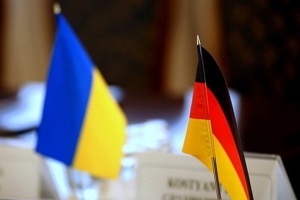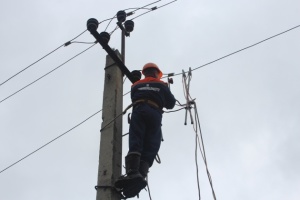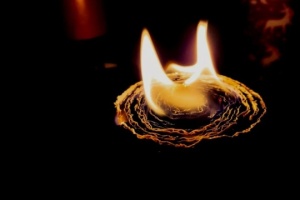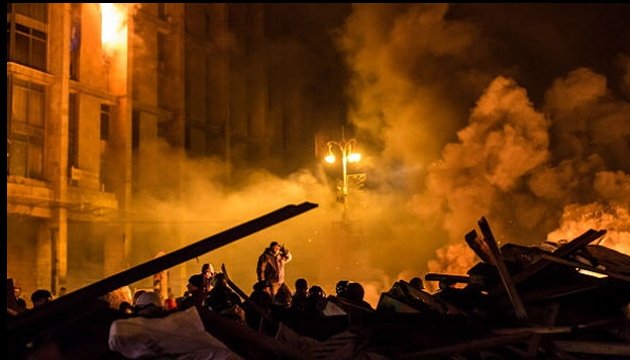
Ukraine marks fifth anniversary of government assault on Maidan
After long scuffles on the evening of February 18, protesters were pushed back to the Maidan. The confrontation got even more fierce on the night of February 18 to 19. Earlier, Berkut riot police officers surrounded protesters from Instytutska Street and Yevropeiska Square. An assault began. Activists set fire to tires to protect themselves. After some time, they succeeded in creating a complete line of blaze that prevented law enforcers from passing. People were throwing everything they found into the fire.
Security forces brought water cannons to the Maidan, trying to extinguish the flames, but attempts were in vain. Maidan protesters repulsed the attack with bricks, fireworks and Molotov cocktails. At the same time, Berkut riot police officers tried to storm the barricades even on BTR armored personnel carriers, but it was in vain.
The Trade Unions House caught fire at 1 o'clock at night. The activists who ran out of the building said there were Berkut riot police officers inside the building who came in from the roof and the first floor and deliberately set fire to the building. When the flames covered most of the building, people still remained inside. They were rescued by means of a crane and a rope. The blaze was put out only on February 20.
On the morning of February 19, law enforcement officers again started assaulting the Maidan. As a result, eight people were killed on that day and 206 were injured, 35 of them seriously.
Kyiv remained in a transport collapse. People holding machine guns were on duty at the entrances to the city, and the subway did not work due to a so-called terrorist threat declared by the authorities. Railway services with Lviv and Ivano-Frankivsk regions were suspended.
The deadly assault on the Maidan triggered mass protests in Ukraine's regions. As the authorities ignored the demands of the protesters, there was a large-scale seizure of government buildings in Lviv, Ivano-Frankivsk, Ternopil, and Lutsk.
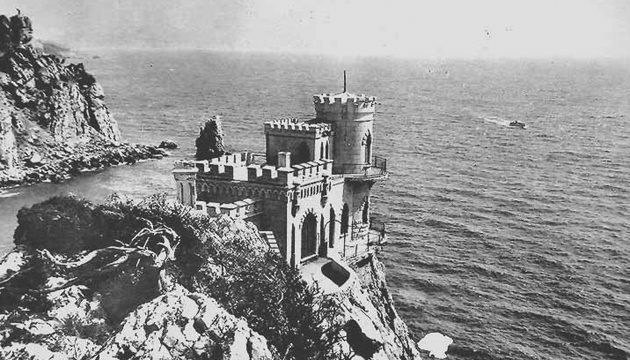
In February 19, 1954, Crimea became part of Ukraine. On this day, the Presidium of the Supreme Soviet of the Soviet Union issued a decree on the withdrawal of the Crimean region from the Russian Soviet Federative Socialist Republic and its transfer to the Ukrainian SSR. On April 26, 1954, on the basis of its decree, the Supreme Soviet of the USSR adopted a law on the transfer of Crimea to Ukraine and approved these changes in the constitution of the country.
Exactly 60 years later, on February 20, 2014, Russia cynically annexed the Crimean peninsula. The violent annexation of Crimea is not recognized either by Ukraine or international organizations. According to the law of Ukraine on ensuring the rights and freedoms of citizens and the legal regime in the temporarily occupied territory of Ukraine, the territory of the Crimean peninsula is considered as a temporarily occupied territory.
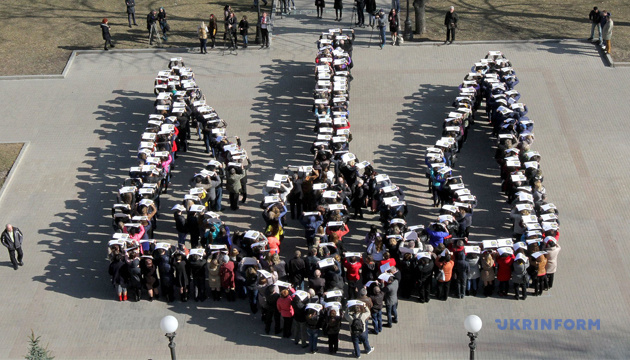
On February 19, 1992, the Verkhovna Rada of Ukraine approved the trident as the small coat of arms of Ukraine, considering it as the main element of the great state coat of arms of Ukraine. The open competition for the creation of the draft state coat of arms of Ukraine, in accordance with a Verkhovna Rada resolution, was announced on June 24, 1991 (that is, during the existence of the Soviet Union). A working group of people's deputies, historians, art experts and museum workers was formed under the auspices of the Commission on Culture and Spiritual Revival of the Verkhovna Rada. On October 4, 1991, the expert group summed up the results of the competition. Over 200 works were submitted for participation (all of them are now stored in the Central State Archive of Central Government Agencies). It is important that 192 of them contained an image of the trident in different contexts. The project of historian Andriy Grechylo and artist Ivan Turetsky was the competition. According to Grechylo, the trident in the graphic tradition of the reign of Grand Prince Volodymyr was taken not accidentally, because "it was under Prince Volodymyr that all ethnic Ukrainian lands were united in one state. In 1918, the trident was also chosen as the emblem of the Ukrainian People's Republic as a symbol of the unity of the Ukrainian lands. Such a coat of arms has the idea of restoring the tradition of statehood." The Great State Emblem of Ukraine has not yet been approved.


